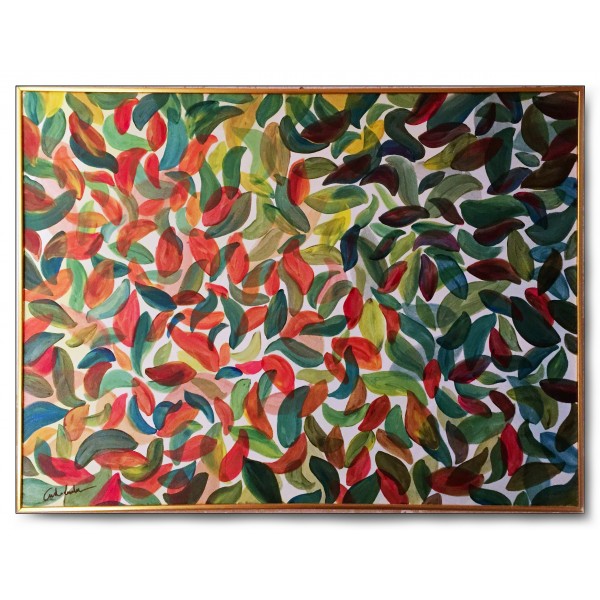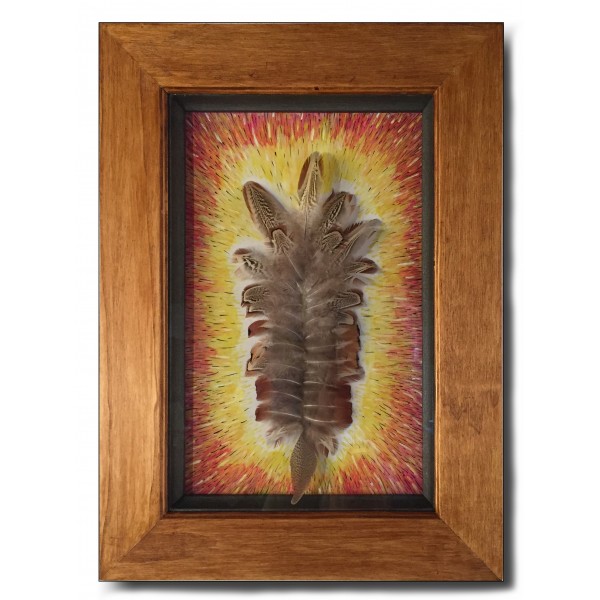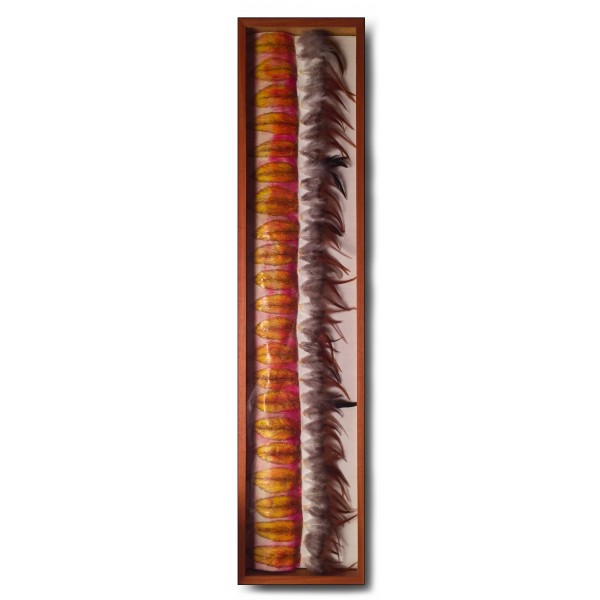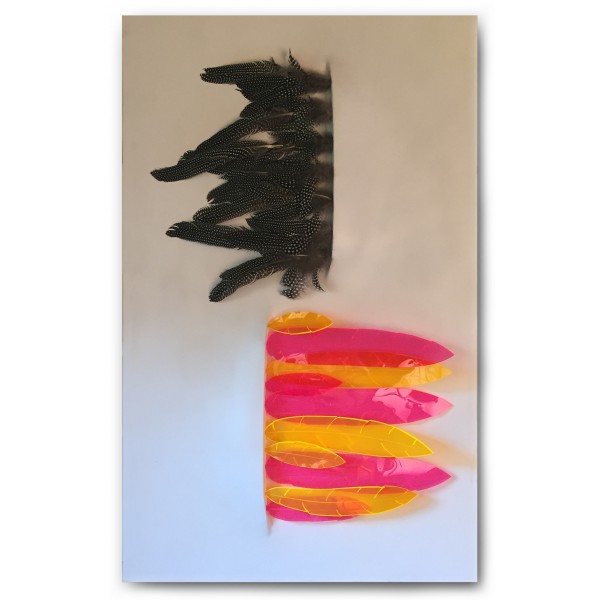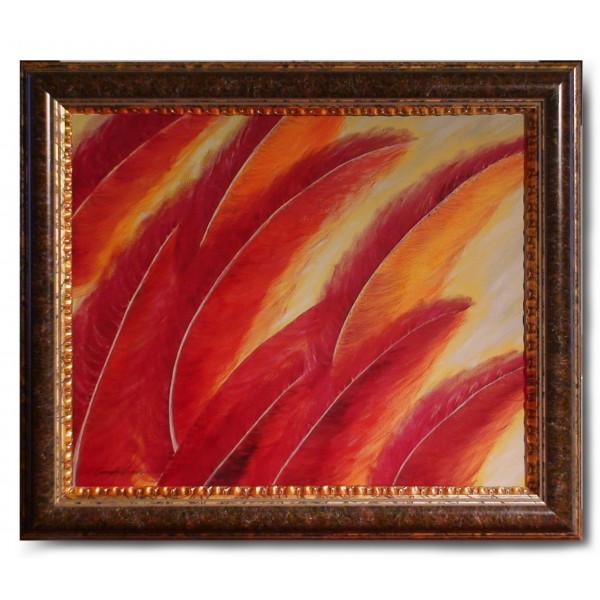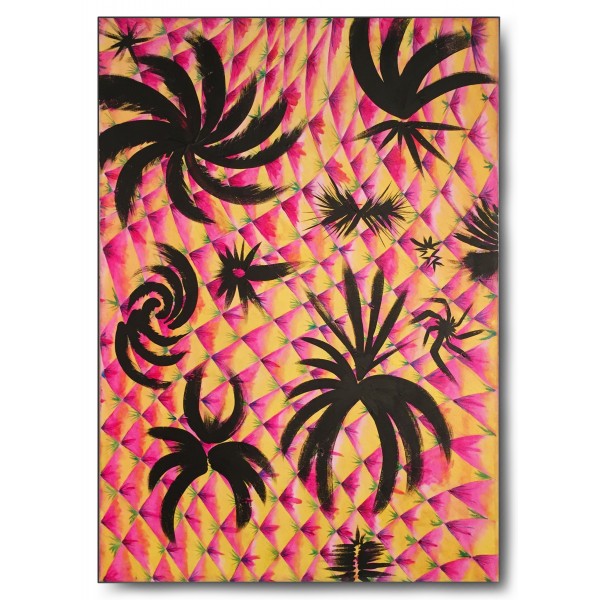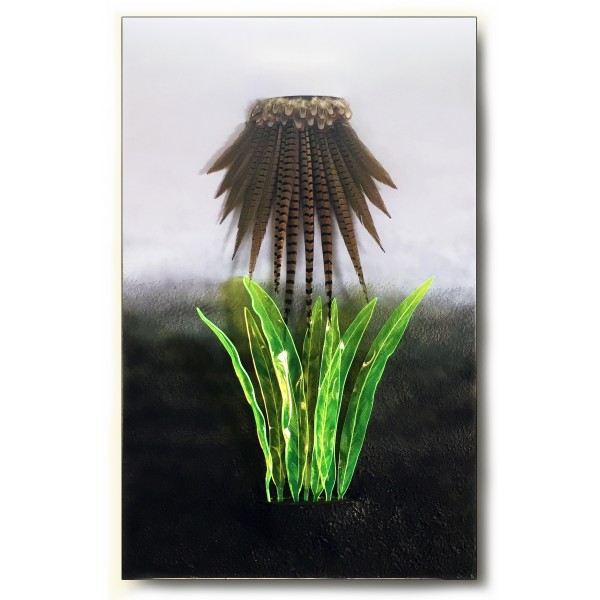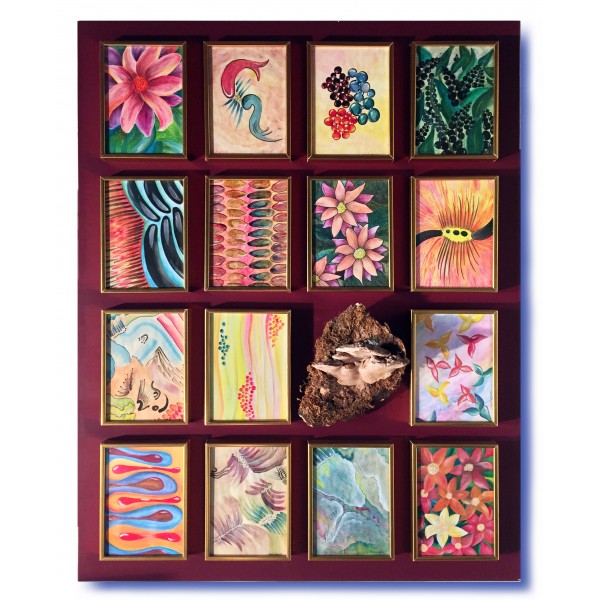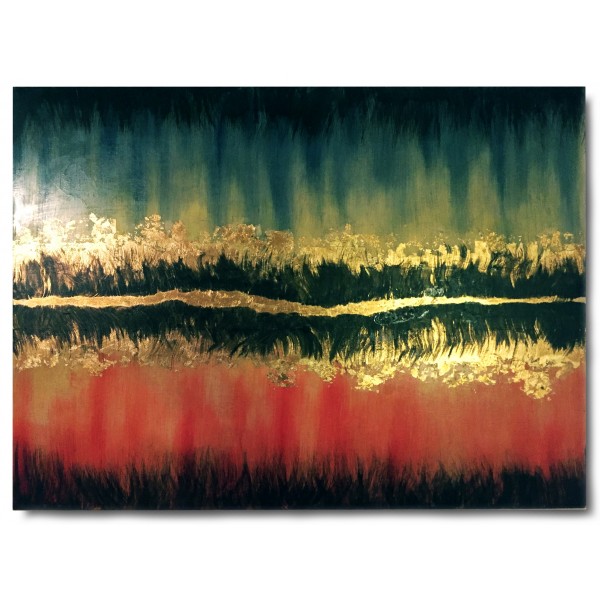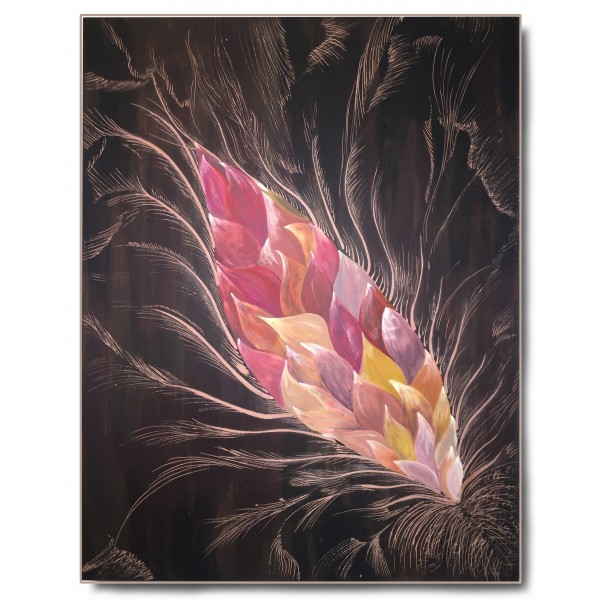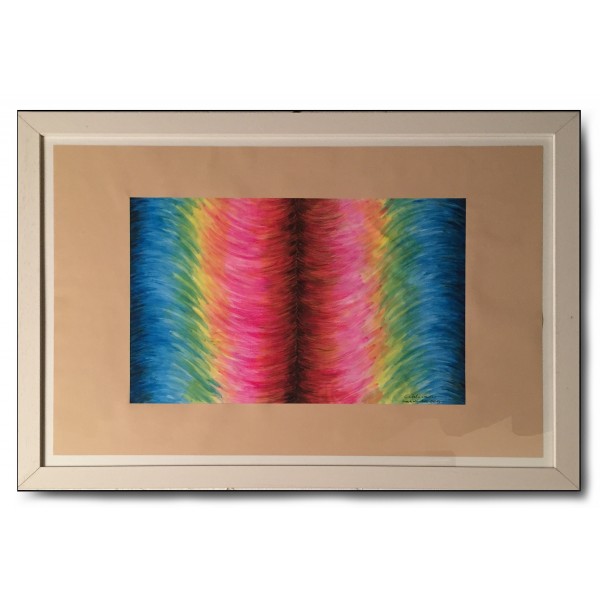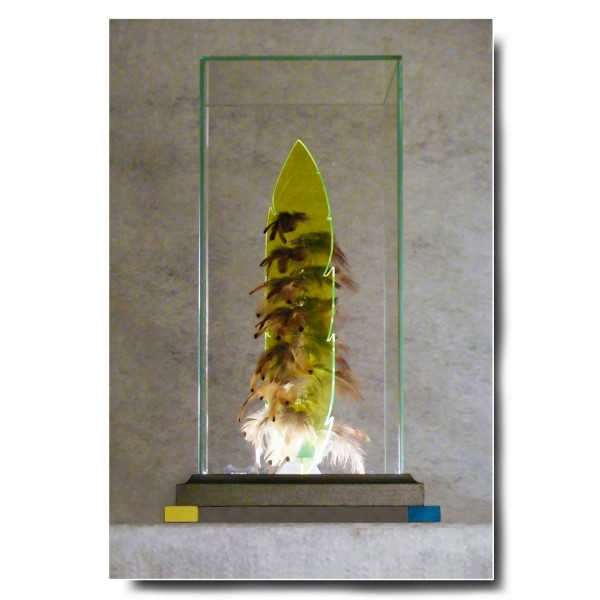No products
Categories
- Fashion Accessories
- Clothing
- Beauty & Lifestyle
-
Hi-Tech & Lifestyle
- Gaming
-
Case
- iPhone 11 Pro
- iPhone 11 Pro Max
- iPhone 11
- iPhone X / XS
- iPhone XS Max
- Samsung S10 / S10+ / S10e
- Huawei P30 / P30 Pro / P30 Lite
- Huawei P20 / P20 Pro / P20 Lite
- iPhone XR
- Samsung S9
- Samsung S9+
- iPhone 8 / 7
- iPhone 8 Plus / 7 Plus
- Samsung S8
- Samsung S8+
- Samsung S7
- Samsung S7 Edge
- iPhone 6 / 6 s
- iPhone 6 Plus / 6 s Plus
- iPhone 5 / SE
- Skin
- Audio
- Smart Home
- Drones & Hoverboard
- Photo & Video
- Desk Supplies
- Accessories
- Games
- Beverages
- Food
- Home
- Jewelry
- Luxury
- Travel
- Art
- Footwear
- Vintage Fashion
- Restaurants
- Sport
- Animals
- Gift Ideas
- Kidswear
Extra
Viewed Products
-

Qeeboo - Mirror Oggian Samu XL - Qeeboo Mirror by Marco Oggian - Furnishing -...
A set of Mirrors in different...
-

2 ME Style - Case Lizard Light Blue Glossy - iPhone 6Plus
Finely handmade real lizard leather...
Corrado Novello
Presentation "Aesthetic Research"

Artistic Path
1964/1967 - "P: Selvatico" Institute of Art Padua - Enrollment at the school and graduation of art master in pictorial decoration
1964 - It is the "Castelfranco group" - I adhere to the free association of young artists who are proposing to compare ideas and works, to participate in mo-stre, to inform about artistic-cultural activities, >
1964 - Exhibition "Religion in Art" Thiene (VI) - Selected, I participate in a charcoal exhibition on cardboard
1965 - Collective Show "Homage Award in Castelfranco Veneto" I participate in the exhibition "Homage Award in Castelfranco Veneto", in which my work is inspired by "informal" painting. The award, to which the Ted Group participated, the N. Group and other important contemporary Italian artists are assigned to Getulio Alviani
1965 - National Painting Award "Bruno Pendini" Padua - My work among the 240 in competition is selected at the exhibition of the "Primo Piano" art gallery in Padua 1967 - Fiera Of Padua - Selected to represent the State Art Institute "P. Wild "with my own plexiglass elaborate (scale model of a divisible partition) 1967 - I follow the CSDIVenezia - I sign up and graduate from the Venice Industrial Diplomacy Course < 1968 - "Sincron" Gallery - I am present in the collective exhibition to which they participate: Bigolin, Campesan, Nardin, Niero, Sartorello (artists accredited to the "Number Gallery" of Fiamma Vigo
1968 - Artistic event at Anfo, Lake D'Idro (BS) - I participate with Sergio Bigolin at the exhibition "A country + the avant-garde" event. A well-trained structure is set up in the territory.
1968 - Art event in Novara - Show-event "beyond the avant-garde" 1968 - Milan - "Multiples" Milan Gallery
1967 - Gallery " Sincron "Breitza - I participate in the initiative called" Multi-pli Operation / 67 ", which aims to promote And to bring "conceptual" art closer to the general public with artistic works designed to be industrially produced. The great inspiration is Bruno Munari. Many artists (Group 7) collaborate with Armando Nizzi's Sincron (Brescia) gallery
1969 - I exhibit at the Gallery "Studio Farnese" Rome - Collective Show "Proposals 69". Part of the group of artists accredited to the gallery
1969 - Gallery "Il Cerchio", Rome - Collective exhibition "Graphic 1969"
1973 - I teach to the IA. "M.Fanoli" - I am employed at the State Art Institute of Cittadella (PD) where I teach photography
1974 - I preside the ARCI Culture Circle of Castelfranco Veneto For ten years I am a promoter Of theater performances, musicals, visual arts exhibitions, debates, cineforum, etc
1975/1985 - Building Commissioner in Castelfranco Veneto 1990
1990 / today - Resuming The artistic experience
Brief History
Compendium of the "Artistic Curriculum" p er Understanding the Theory Evolution
My interest in drawing was born when attending the Media School (then not mandatory) by painting natural subjects, especially flowers, because they are attracted to colors.
For this natural predisposition I was directed to enroll me at the State Art Institute "P. Wildlife "of Padua. It was the best choice I could do!
When attending I.S.A. New prospects emerged. The contact with teachers and students of the art school was a strong catalyst for creativity. In this context, a small group of school students, who from Castelfranco took the train to Padua, decided to form an enlarged group of young people interested in the art world. Thus was born in 1964 the "Castelfranco Group" to which I was very interested in participation.
.jpg)
Antonio Niero, an artist who in Castellana already worked with great success in contemporary art, was the mentor of the group. Strong of his experience as a member of the group of artists accredited in the "Numero" gallery of Fiamma Vigo, he directed the group in his artistic experiences by bringing the novelties that came from all over Italy and beyond.
The group occasionally found themselves in the various inns in the center of Castelfranco to discuss, compare, bring news, events that have relevance to the world of art and culture.
My artistic start was, as I said, the representation of natural objects but in a short time, stimulated by these new experiences, I left figurative representation for a more complex and abstract.
.jpg)
On the occasion of the "Castelfranco Prize" (the award-winning Getulio Alviani) the group participated in the selection for the section of young painters and Sergio Bigolin, a member of the "Castelfranco Group" won the first prize. On this occasion, for the first time, my work was reported by the jury. It was a painting that portrayed Jackson Pollock's "action painting" themes, where the rhythm of the gesture and drip typical of this technique, alongside the attempt to tame the casualness by orienting the color behavior while letting it drip.
.jpg)
The contact with Antonio Niero and the artists of the "Numero" Gallery gave me the opportunity to cross the Venice with different artistic experiences. In particular, some artists who worked with Fiamma Vigo at that time addressed the "programmed" art by borrowing and reworking the experience that came from the works of European constructivism (first German, Russian then) Years "20-30" and in particular from the German "BauHaus" school.
The Italian movement inspired by Mario Radice's Lombard rationalism, as well as the Movement for Concrete Art, or MAC founded by Gillo Dorfles and Bruno Munari to which they joined, among the most famous: Veronesi, Perilli, Zanuso, Dorazio.
It was in this cultural, but also historical, and even more social context, that my ideas took a course that continues to this day.
Now I need a clarification to better illustrate the motives behind the turn that was not just artistic but also life; A turning point, which I believe, involved many Italian intellectuals at that time. The sixties marked, in my opinion, epochal changes in Italian society and therefore in people for various reasons.
And here is the reason for my great interest in the arts that worried or addressed this new company I felt involved and I wanted to be an interpreter. William Morris's "Arts and Crafts" in England, BauHaus (Walter Gropius's Weimar and Dessau) in Germany Even all the movements of modern art attracted this new company. However, they are the first two movements which, in my view, meant to operate but also to exert a strong modification and emancipation of the emerging society.
"Arts and Crafts" was concerned about safeguarding the rules of good craftsmanship by addressing her interest in producing aesthetically harmonious objects even if she was present everyday in homes of middle English classes including wallpaper , Fabrics, furniture and glasses etc.
"BauHaus" The Applied Arts School and Architecture created by Walter Gropius (Weimar, Dessau) collected Morris's legacy and guidance by influencing all modern art.
"The experience of Bauhaus has its antecedents in the cultural climate that had emerged from the mid-eighteenth century in Europe, especially in Anglo-Saxon countries, in the historical period following the Industrial Revolution , that had produced the mechanization of production systems, the growth of the proletariat and started a process of rationalization and reduction of commodity prices. "
Influenced and inspired by these ideas that seemed to me to be perfectly matched at that historic moment in Italy, I began experimenting with these goals: The artist should be interpreter of his historical moment and turn his gaze to Its contemporary society, should at the same time contribute to the development and support of the emerging society. Do not be just a witness, but an interpreter, a preacher and a guide to the "new" advancer, who can use your own sensitivity. As a result, my aesthetic research turned to the new materials that technology made available to the industrial world to propose a new approach to figuration while contemplating the new ideas that the world of psychology of visual perception was proposing with the "semiotics". The meeting with prof. Silvio Ceccato and his theories on cybernetics were illuminating for me, as well as the poetic experiences of visual poetry in those years ahead of experimentation.
These are the years when the 1966 Venice Art Biennial certifies the return to rationality and rigor. It was the year of art, " optical, kinetic and programmed". The exhibition spaces of the Giardini were dominated by Argentine installations Julio Le Parc, awarded for painting and Venezuelan Raphael Soto.
And it is in this "culture broth" that my artwork in 1967 moved from "informal" to the more concrete and rational art. I used new materials such as Plexiglass, which with its transparencies and workability offered me the opportunity to propose themes that have or are related to optical effects combined with color games. My favorite theme, from a formal point of view, was the square or the diamond (which is just a square rotated).
.jpg)
In the same year I finished my studies at the Istituto d'Arte in Padua and joined me at the Industrial Design Course. It was an almost automatic choice.
I met in this school masters and subjects that came closer to my aesthetic research. I must mention here, Luigi Veronesi, Italo Zannier, Mario De Luigi, Paolo Torsello, Giuseppe Mazzariol, Cristiano Gasparetto, to name but a few. Here I studied with greater awareness the history of the industrial design schools mentioned above but also received a design approach that will follow me throughout my life.
The end of the '60s years ended with a great social ferocity. In 1969 there were great movements between students and workers who were particularly active with debates, occupations, demonstrations and strikes involving both the Faculty of Architecture in Venice and the Marghera industrial area. Our school was involved and the same didactics were affected. In particular, the problem was the relationship between the role of designer and industrial designer in relation to the new demands of the society of the time.
In those years the writings of philosophers of the Frankfurt school such as Walter Benjamin with his book "The work of art in the era of its technical reproducibility" And Herbert Marcuse with "The Man in a Dimension" and "Eros and Civilization" who treat the aesthetic issues in contemporary and contemporary art differently and again Industrial product in general.
In 1968 my collaboration with the "Sincron" gallery of Brescia started, which produced a series of national exhibitions between Milano (Galleria Milano) Brescia and Rome (gallery "Studio Farnese" "The Circle" ) . They were collective where they displayed both objects but also graphics (lost materials and documentation) fold.
.jpg)
Of this activity, the experience I find most significant was the project "Multiple Operations / 67" designed by the animator of the "Sincron" Armando Nizzi was done by master Bruno Munari. Below you can copy / paste the terms and features wanted by Munari. With Munari multipliers he intends to pursue the art project at the reach of all. Here is the "Manifesto dei Multipli" written by Munari for the Friends of the Sincron explaining what they are and why they are born:
.jpg)
In 1971, military service closed a phase of my life because I finished the cycle of studies at the Venice Designing Course, interrupting artistic activities and all contacts for over a year and a half. I left behind a very intense period of experience but in conflict with my own convictions. The youth movement under the name of the "68" caused me an intellectual derision.
After some experience as an advertising graphic I offer you the opportunity to teach at the State Art Institute for Graphics and Photography at Cittadella. Here I taught photography. Photography is an integral part of my training as well as graphics thanks to the masters Italo Zannier and Giulio Veronesi of C.S.D.I.V.
During the eighties promoted as chairman of the ARCI recreational / cultural circles in Castelfranco Veneto exhibitions, debates, musical initiatives, cineforum.
At the same time, I made the utmost effort in teaching, considering the position of a privileged teacher to promote students' artistic but also professional and human knowledge. Knowing what was the importance of social promotion knowing about my person, I poured on my students all that I learned to put them in conditions to grow intellectually and thus realize that process of social and human progress that With artistic action I could not and generate. She was therefore a promoter of many extra-curricular initiatives and always in the forefront of school teaching activities. Needless to say, all this fervor led to the aspirations of aesthetic researcher.
That's why I left pure aesthetic search.
The sense of responsibility for my students' education and my constant desire to keep up to the expressive techniques of photography kept me constantly active in the upgrade that I then downloaded to my school and my students. This action pushed me to follow in full the transition from the analogue techniques of photo-cinematography to digital photography. Therefore, from developing and printing with chemists and the use of photo / film films I gradually passed on the use of digital instruments. In photography, at school, I drove digital reproduction from the first IBM personal computers with processors 286 and then 386 with MS-DOS operating system but also the first MAC / APPLE with photo retouch management applications. Cinematography turned into video production. Transfer technique to film in magnetic tape technique. I attached my teaching material to the SONY ¾-inch video mount unit with JVC tri-tube camera. To this I added (one of the first in Veneto) American VTR production titler with whom I made my students post-production experiences and short films.
From this moment on, the evolution of the technique was overwhelming in my growth. The stimulus to use these new tools made available to image creators prevailed. The need to be constantly updated to provide a didactic approach with times was overwhelming with respect to the design use of these extraordinary tools. I believe that this situation occurred in many creatives during this time, losing ourselves in experimenting with new tools and programs that the industry and software house marketed with a scientific timeline to ensure that sales They would always be constant if they did not increase.
The years 90 marked for me the passage to a reflection on the significance of running the technologies proposed by the IT industry. In particular, after years of image processing with software colors that offer virtual " palet color" the creator can not control the management, I felt strongly the need to put my hands in real color The chemical / physical one. That's why I took refuge in aesthetic research, but with a new, different, physical approach. Start with activity with a first refusal. I understand that if I want to think with my head, I have to go out of the digital techniques that with Adobe and her drawing programs that pre-chew the ideas and deliver pictures of virtual colors: pixels. I felt the strong and intense need to resume contact with the physicality of the color. Tubular color does not deceive, that's what it is! But what do / say with a color tube in your hand?
I did not have any models to interpret or follow, I guess I had to "navigate in sight" with a single idea: interpreting the society in which I live but also criticizing it, helping her reflect on her work, Active witness. A witness who, however, reason with his own head maybe wrong! But with the pleasure of the researcher, without the concern of showing anything. Free from Intellects.
I can not describe the emotion of the meeting, after so many years, of true color, that of the tube! It was like finding back after many years a dear friend who you thought you lost.
The riddle of what to represent and what to see if you were still able to work with true color remained. It helped me to rethink how my Art Institute professors began their lessons on using color: to copy the great masters of the past.
.jpg)
And so I did. I chose authors with such color and landscape. The first master I copied (without pretending to photocopy but with the intent to figure out how to use color) was the Baciccio from the work "Resting during the Escape to Egypt (1639-1709)" followed by the Giambellino with the "Madonna with the Child (1500)" but could not miss the Giorgione / Titian that reproduced the landscape of "Venus".
.jpg)
I moved slowly from classical subjects to subjects that provided chromatic variations. So the approach was towards natural plant flowers and leaves. With this assumption I started using the color thinking about the possible chromatic vibrations.
.jpg)
The sinuousness of natural shapes and colors led me into a search of the gesture with the brush along with the need to give a structure to the design or painting. My intent, in these elaborations, was to stimulate a more careful observation towards nature by using the eyes but also with the mind, taking a respectful attitude towards the world around us. Educate the observer through my works to a rational view of the world as the photographer does before snap it.
.jpg)
The next step was to load meaningfully the shapes I was producing by inserting polished wood elements highlighting the beauty of its structure.
.jpg)
Research continues with the same intent: to portray man's work with that of nature, with an attitude of respect and attention. The message that underlies my work is to remind the contemporary man that nature is more powerful. That man is himself nature, but his ability to process complexity can not be compared to that of nature. Not even the huge meteorite that struck millions of years ago the earth was able to bend nature!
.jpg)
As an artist, I propose, with my aesthetic research to my contemporaries, the prudence and attitude of respect and humility towards nature. For this reason, I propose to the vision (and consequently to the reflection) of my aesthetic elaborations as nature faces us and the remarkable results of the search for man "sapiens".
.jpg)
My recent work, exemplifies these concepts by comparing one of the products that man has produced with chemistry and a natural product: "plastic materials and feather, wood etc". Materials of great aesthetic seduction that from comparison can point us to new aesthetic paths.
"Herbert Marcuse's One-Man"
« A comfortable, polished, reasonable, democratic non-freedom prevails in advanced industrial civilization, a sign of technical progress »
So Herbert Marcuse begins his perhaps more important work, The man in a dimension. This is a more pessimistic Marcuse than Eros and Civilization, more available to surrender to a social order that appears totalitarian, which permeates every aspect of the life of the individual and, above all, it has also encompassed Traditionally "anti-system" forces like the working class. In this model, the life of the individual is reduced to the atavistic need to produce and consume, without the possibility of resistance. Marcuse denounces the fundamentally repressive character of advanced industrial society, flattens in reality, the man into the consumer dimension, euphoric and dull, whose freedom is just the choice of many different products.
Herbert Marcuse was one of the most influential thinkers of the twentieth century, especially the passion for his students in the late sixties. His intrinsically anti-authoritarian thought reflected the will of radical change that animated the protest of young people throughout the Western world; His refusal of any form of repression, his dryness to technological civilization (in both liberal-capitalist and communist-soviet declinations), made him the philosopher of "great rejection" towards all forms of repression.
For the sixty-five, the concept of "erosion liberation" was also very important not only as sexual liberation, but as liberation of man's creative energies by the conditioning of repressive society, A more open society, made up of free and solidarity among men. Eros also understood as "beautiful", in opposition to the concept of domination of technological society; He used the expression "society as a work of art", or a more authentic society, truly free, dominated by fantasy and art as the fundamental dimension of every form of coexistence.
The essay by Walter Benjamin The work of art in the era of its technical reproducibility is today considered one of the classic texts of the aesthetic of the 1900s and continues to exercise Strongly influences especially on the analysis and evaluation of mass culture. Benjamin's position on this subject differs from that of other philosophers of the Frankfurt School, since Benjamin comes to a judgment on mass art that is not clearly condemned but tries to highlight both the risks and the emancipatory potential.
- The multiple is designed by the author as such and is not therefore a reproduction of a work of art. The creation of a multiple is chosen by the author as the most suitable medium for passing aesthetic information, regardless of the preciousness of the materials. Unlimited and low-priced, regardless of the author's "commercial" value. the low multiplier price , Strictly calculated on the cost of production, allows a great diffusion in that layer of audience interested in the object and not speculation. - multiples are therefore not copies, but copywriters."
“Duplicate Manuscript”
The "Sincron Operations Center" in Brescia, pro following the collective operation started in 1967, presents five new aesthetic objects produced in 250 copies, signed, numbered And collectively guaranteed.
The Sincron Center intends to point out that, being multiples of two or more objects produced in a limited or unlimited number of specimens with the purpose of communicating visual information of aesthetic character to a vast audience and undifferentiated, their characteristics are:
- The multiple is designed by the author as such and is not therefore a reproduction of a work of art.
- The creation of a multiple is chosen by the author as the most suitable medium for passing aesthetic information, regardless of the preciousness of the materials.
- Unlimited and low-priced, regardless of the author's "commercial" value.
- The low multiplier price , Strictly calculated on the cost of production, allows a great diffusion in that layer of audience interested in the object and not speculation.
- Multiples are therefore not copies, but copywriters.
Corrado Novello
Presentation "Aesthetic Research"

Artistic Path
1964/1967 - "P: Selvatico" Institute of Art Padua - Enrollment at the school and graduation of art master in pictorial decoration
1964 - It is the "Castelfranco group" - I adhere to the free association of young artists who are proposing to compare ideas and works, to participate in mo-stre, to inform about artistic-cultural activities, >
1964 - Exhibition "Religion in Art" Thiene (VI) - Selected, I participate in a charcoal exhibition on cardboard
1965 - Collective Show "Homage Award in Castelfranco Veneto" I participate in the exhibition "Homage Award in Castelfranco Veneto", in which my work is inspired by "informal" painting. The award, to which the Ted Group participated, the N. Group and other important contemporary Italian artists are assigned to Getulio Alviani
1965 - National Painting Award "Bruno Pendini" Padua - My work among the 240 in competition is selected at the exhibition of the "Primo Piano" art gallery in Padua 1967 - Fiera Of Padua - Selected to represent the State Art Institute "P. Wild "with my own plexiglass elaborate (scale model of a divisible partition) 1967 - I follow the CSDIVenezia - I sign up and graduate from the Venice Industrial Diplomacy Course < 1968 - "Sincron" Gallery - I am present in the collective exhibition to which they participate: Bigolin, Campesan, Nardin, Niero, Sartorello (artists accredited to the "Number Gallery" of Fiamma Vigo
1968 - Artistic event at Anfo, Lake D'Idro (BS) - I participate with Sergio Bigolin at the exhibition "A country + the avant-garde" event. A well-trained structure is set up in the territory.
1968 - Art event in Novara - Show-event "beyond the avant-garde" 1968 - Milan - "Multiples" Milan Gallery
1967 - Gallery " Sincron "Breitza - I participate in the initiative called" Multi-pli Operation / 67 ", which aims to promote And to bring "conceptual" art closer to the general public with artistic works designed to be industrially produced. The great inspiration is Bruno Munari. Many artists (Group 7) collaborate with Armando Nizzi's Sincron (Brescia) gallery
1969 - I exhibit at the Gallery "Studio Farnese" Rome - Collective Show "Proposals 69". Part of the group of artists accredited to the gallery
1969 - Gallery "Il Cerchio", Rome - Collective exhibition "Graphic 1969"
1973 - I teach to the IA. "M.Fanoli" - I am employed at the State Art Institute of Cittadella (PD) where I teach photography
1974 - I preside the ARCI Culture Circle of Castelfranco Veneto For ten years I am a promoter Of theater performances, musicals, visual arts exhibitions, debates, cineforum, etc
1975/1985 - Building Commissioner in Castelfranco Veneto 1990
1990 / today - Resuming The artistic experience
Brief History
Compendium of the "Artistic Curriculum" p er Understanding the Theory Evolution
My interest in drawing was born when attending the Media School (then not mandatory) by painting natural subjects, especially flowers, because they are attracted to colors.
For this natural predisposition I was directed to enroll me at the State Art Institute "P. Wildlife "of Padua. It was the best choice I could do!
When attending I.S.A. New prospects emerged. The contact with teachers and students of the art school was a strong catalyst for creativity. In this context, a small group of school students, who from Castelfranco took the train to Padua, decided to form an enlarged group of young people interested in the art world. Thus was born in 1964 the "Castelfranco Group" to which I was very interested in participation.
.jpg)
Antonio Niero, an artist who in Castellana already worked with great success in contemporary art, was the mentor of the group. Strong of his experience as a member of the group of artists accredited in the "Numero" gallery of Fiamma Vigo, he directed the group in his artistic experiences by bringing the novelties that came from all over Italy and beyond.
The group occasionally found themselves in the various inns in the center of Castelfranco to discuss, compare, bring news, events that have relevance to the world of art and culture.
My artistic start was, as I said, the representation of natural objects but in a short time, stimulated by these new experiences, I left figurative representation for a more complex and abstract.
.jpg)
On the occasion of the "Castelfranco Prize" (the award-winning Getulio Alviani) the group participated in the selection for the section of young painters and Sergio Bigolin, a member of the "Castelfranco Group" won the first prize. On this occasion, for the first time, my work was reported by the jury. It was a painting that portrayed Jackson Pollock's "action painting" themes, where the rhythm of the gesture and drip typical of this technique, alongside the attempt to tame the casualness by orienting the color behavior while letting it drip.
.jpg)
The contact with Antonio Niero and the artists of the "Numero" Gallery gave me the opportunity to cross the Venice with different artistic experiences. In particular, some artists who worked with Fiamma Vigo at that time addressed the "programmed" art by borrowing and reworking the experience that came from the works of European constructivism (first German, Russian then) Years "20-30" and in particular from the German "BauHaus" school.
The Italian movement inspired by Mario Radice's Lombard rationalism, as well as the Movement for Concrete Art, or MAC founded by Gillo Dorfles and Bruno Munari to which they joined, among the most famous: Veronesi, Perilli, Zanuso, Dorazio.
It was in this cultural, but also historical, and even more social context, that my ideas took a course that continues to this day.
Now I need a clarification to better illustrate the motives behind the turn that was not just artistic but also life; A turning point, which I believe, involved many Italian intellectuals at that time. The sixties marked, in my opinion, epochal changes in Italian society and therefore in people for various reasons.
And here is the reason for my great interest in the arts that worried or addressed this new company I felt involved and I wanted to be an interpreter. William Morris's "Arts and Crafts" in England, BauHaus (Walter Gropius's Weimar and Dessau) in Germany Even all the movements of modern art attracted this new company. However, they are the first two movements which, in my view, meant to operate but also to exert a strong modification and emancipation of the emerging society.
"Arts and Crafts" was concerned about safeguarding the rules of good craftsmanship by addressing her interest in producing aesthetically harmonious objects even if she was present everyday in homes of middle English classes including wallpaper , Fabrics, furniture and glasses etc.
"BauHaus" The Applied Arts School and Architecture created by Walter Gropius (Weimar, Dessau) collected Morris's legacy and guidance by influencing all modern art.
"The experience of Bauhaus has its antecedents in the cultural climate that had emerged from the mid-eighteenth century in Europe, especially in Anglo-Saxon countries, in the historical period following the Industrial Revolution , that had produced the mechanization of production systems, the growth of the proletariat and started a process of rationalization and reduction of commodity prices. "
Influenced and inspired by these ideas that seemed to me to be perfectly matched at that historic moment in Italy, I began experimenting with these goals: The artist should be interpreter of his historical moment and turn his gaze to Its contemporary society, should at the same time contribute to the development and support of the emerging society. Do not be just a witness, but an interpreter, a preacher and a guide to the "new" advancer, who can use your own sensitivity. As a result, my aesthetic research turned to the new materials that technology made available to the industrial world to propose a new approach to figuration while contemplating the new ideas that the world of psychology of visual perception was proposing with the "semiotics". The meeting with prof. Silvio Ceccato and his theories on cybernetics were illuminating for me, as well as the poetic experiences of visual poetry in those years ahead of experimentation.
These are the years when the 1966 Venice Art Biennial certifies the return to rationality and rigor. It was the year of art, " optical, kinetic and programmed". The exhibition spaces of the Giardini were dominated by Argentine installations Julio Le Parc, awarded for painting and Venezuelan Raphael Soto.
And it is in this "culture broth" that my artwork in 1967 moved from "informal" to the more concrete and rational art. I used new materials such as Plexiglass, which with its transparencies and workability offered me the opportunity to propose themes that have or are related to optical effects combined with color games. My favorite theme, from a formal point of view, was the square or the diamond (which is just a square rotated).
.jpg)
In the same year I finished my studies at the Istituto d'Arte in Padua and joined me at the Industrial Design Course. It was an almost automatic choice.
I met in this school masters and subjects that came closer to my aesthetic research. I must mention here, Luigi Veronesi, Italo Zannier, Mario De Luigi, Paolo Torsello, Giuseppe Mazzariol, Cristiano Gasparetto, to name but a few. Here I studied with greater awareness the history of the industrial design schools mentioned above but also received a design approach that will follow me throughout my life.
The end of the '60s years ended with a great social ferocity. In 1969 there were great movements between students and workers who were particularly active with debates, occupations, demonstrations and strikes involving both the Faculty of Architecture in Venice and the Marghera industrial area. Our school was involved and the same didactics were affected. In particular, the problem was the relationship between the role of designer and industrial designer in relation to the new demands of the society of the time.
In those years the writings of philosophers of the Frankfurt school such as Walter Benjamin with his book "The work of art in the era of its technical reproducibility" And Herbert Marcuse with "The Man in a Dimension" and "Eros and Civilization" who treat the aesthetic issues in contemporary and contemporary art differently and again Industrial product in general.
In 1968 my collaboration with the "Sincron" gallery of Brescia started, which produced a series of national exhibitions between Milano (Galleria Milano) Brescia and Rome (gallery "Studio Farnese" "The Circle" ) . They were collective where they displayed both objects but also graphics (lost materials and documentation) fold.
.jpg)
Of this activity, the experience I find most significant was the project "Multiple Operations / 67" designed by the animator of the "Sincron" Armando Nizzi was done by master Bruno Munari. Below you can copy / paste the terms and features wanted by Munari. With Munari multipliers he intends to pursue the art project at the reach of all. Here is the "Manifesto dei Multipli" written by Munari for the Friends of the Sincron explaining what they are and why they are born:
.jpg)
In 1971, military service closed a phase of my life because I finished the cycle of studies at the Venice Designing Course, interrupting artistic activities and all contacts for over a year and a half. I left behind a very intense period of experience but in conflict with my own convictions. The youth movement under the name of the "68" caused me an intellectual derision.
After some experience as an advertising graphic I offer you the opportunity to teach at the State Art Institute for Graphics and Photography at Cittadella. Here I taught photography. Photography is an integral part of my training as well as graphics thanks to the masters Italo Zannier and Giulio Veronesi of C.S.D.I.V.
During the eighties promoted as chairman of the ARCI recreational / cultural circles in Castelfranco Veneto exhibitions, debates, musical initiatives, cineforum.
At the same time, I made the utmost effort in teaching, considering the position of a privileged teacher to promote students' artistic but also professional and human knowledge. Knowing what was the importance of social promotion knowing about my person, I poured on my students all that I learned to put them in conditions to grow intellectually and thus realize that process of social and human progress that With artistic action I could not and generate. She was therefore a promoter of many extra-curricular initiatives and always in the forefront of school teaching activities. Needless to say, all this fervor led to the aspirations of aesthetic researcher.
That's why I left pure aesthetic search.
The sense of responsibility for my students' education and my constant desire to keep up to the expressive techniques of photography kept me constantly active in the upgrade that I then downloaded to my school and my students. This action pushed me to follow in full the transition from the analogue techniques of photo-cinematography to digital photography. Therefore, from developing and printing with chemists and the use of photo / film films I gradually passed on the use of digital instruments. In photography, at school, I drove digital reproduction from the first IBM personal computers with processors 286 and then 386 with MS-DOS operating system but also the first MAC / APPLE with photo retouch management applications. Cinematography turned into video production. Transfer technique to film in magnetic tape technique. I attached my teaching material to the SONY ¾-inch video mount unit with JVC tri-tube camera. To this I added (one of the first in Veneto) American VTR production titler with whom I made my students post-production experiences and short films.
From this moment on, the evolution of the technique was overwhelming in my growth. The stimulus to use these new tools made available to image creators prevailed. The need to be constantly updated to provide a didactic approach with times was overwhelming with respect to the design use of these extraordinary tools. I believe that this situation occurred in many creatives during this time, losing ourselves in experimenting with new tools and programs that the industry and software house marketed with a scientific timeline to ensure that sales They would always be constant if they did not increase.
The years 90 marked for me the passage to a reflection on the significance of running the technologies proposed by the IT industry. In particular, after years of image processing with software colors that offer virtual " palet color" the creator can not control the management, I felt strongly the need to put my hands in real color The chemical / physical one. That's why I took refuge in aesthetic research, but with a new, different, physical approach. Start with activity with a first refusal. I understand that if I want to think with my head, I have to go out of the digital techniques that with Adobe and her drawing programs that pre-chew the ideas and deliver pictures of virtual colors: pixels. I felt the strong and intense need to resume contact with the physicality of the color. Tubular color does not deceive, that's what it is! But what do / say with a color tube in your hand?
I did not have any models to interpret or follow, I guess I had to "navigate in sight" with a single idea: interpreting the society in which I live but also criticizing it, helping her reflect on her work, Active witness. A witness who, however, reason with his own head maybe wrong! But with the pleasure of the researcher, without the concern of showing anything. Free from Intellects.
I can not describe the emotion of the meeting, after so many years, of true color, that of the tube! It was like finding back after many years a dear friend who you thought you lost.
The riddle of what to represent and what to see if you were still able to work with true color remained. It helped me to rethink how my Art Institute professors began their lessons on using color: to copy the great masters of the past.
.jpg)
And so I did. I chose authors with such color and landscape. The first master I copied (without pretending to photocopy but with the intent to figure out how to use color) was the Baciccio from the work "Resting during the Escape to Egypt (1639-1709)" followed by the Giambellino with the "Madonna with the Child (1500)" but could not miss the Giorgione / Titian that reproduced the landscape of "Venus".
.jpg)
I moved slowly from classical subjects to subjects that provided chromatic variations. So the approach was towards natural plant flowers and leaves. With this assumption I started using the color thinking about the possible chromatic vibrations.
.jpg)
The sinuousness of natural shapes and colors led me into a search of the gesture with the brush along with the need to give a structure to the design or painting. My intent, in these elaborations, was to stimulate a more careful observation towards nature by using the eyes but also with the mind, taking a respectful attitude towards the world around us. Educate the observer through my works to a rational view of the world as the photographer does before snap it.
.jpg)
The next step was to load meaningfully the shapes I was producing by inserting polished wood elements highlighting the beauty of its structure.
.jpg)
Research continues with the same intent: to portray man's work with that of nature, with an attitude of respect and attention. The message that underlies my work is to remind the contemporary man that nature is more powerful. That man is himself nature, but his ability to process complexity can not be compared to that of nature. Not even the huge meteorite that struck millions of years ago the earth was able to bend nature!
.jpg)
As an artist, I propose, with my aesthetic research to my contemporaries, the prudence and attitude of respect and humility towards nature. For this reason, I propose to the vision (and consequently to the reflection) of my aesthetic elaborations as nature faces us and the remarkable results of the search for man "sapiens".
.jpg)
My recent work, exemplifies these concepts by comparing one of the products that man has produced with chemistry and a natural product: "plastic materials and feather, wood etc". Materials of great aesthetic seduction that from comparison can point us to new aesthetic paths.
"Herbert Marcuse's One-Man"
« A comfortable, polished, reasonable, democratic non-freedom prevails in advanced industrial civilization, a sign of technical progress »
So Herbert Marcuse begins his perhaps more important work, The man in a dimension. This is a more pessimistic Marcuse than Eros and Civilization, more available to surrender to a social order that appears totalitarian, which permeates every aspect of the life of the individual and, above all, it has also encompassed Traditionally "anti-system" forces like the working class. In this model, the life of the individual is reduced to the atavistic need to produce and consume, without the possibility of resistance. Marcuse denounces the fundamentally repressive character of advanced industrial society, flattens in reality, the man into the consumer dimension, euphoric and dull, whose freedom is just the choice of many different products.
Herbert Marcuse was one of the most influential thinkers of the twentieth century, especially the passion for his students in the late sixties. His intrinsically anti-authoritarian thought reflected the will of radical change that animated the protest of young people throughout the Western world; His refusal of any form of repression, his dryness to technological civilization (in both liberal-capitalist and communist-soviet declinations), made him the philosopher of "great rejection" towards all forms of repression.
For the sixty-five, the concept of "erosion liberation" was also very important not only as sexual liberation, but as liberation of man's creative energies by the conditioning of repressive society, A more open society, made up of free and solidarity among men. Eros also understood as "beautiful", in opposition to the concept of domination of technological society; He used the expression "society as a work of art", or a more authentic society, truly free, dominated by fantasy and art as the fundamental dimension of every form of coexistence.
The essay by Walter Benjamin The work of art in the era of its technical reproducibility is today considered one of the classic texts of the aesthetic of the 1900s and continues to exercise Strongly influences especially on the analysis and evaluation of mass culture. Benjamin's position on this subject differs from that of other philosophers of the Frankfurt School, since Benjamin comes to a judgment on mass art that is not clearly condemned but tries to highlight both the risks and the emancipatory potential.
- The multiple is designed by the author as such and is not therefore a reproduction of a work of art. The creation of a multiple is chosen by the author as the most suitable medium for passing aesthetic information, regardless of the preciousness of the materials. Unlimited and low-priced, regardless of the author's "commercial" value. the low multiplier price , Strictly calculated on the cost of production, allows a great diffusion in that layer of audience interested in the object and not speculation. - multiples are therefore not copies, but copywriters."
“Duplicate Manuscript”
The "Sincron Operations Center" in Brescia, pro following the collective operation started in 1967, presents five new aesthetic objects produced in 250 copies, signed, numbered And collectively guaranteed.
The Sincron Center intends to point out that, being multiples of two or more objects produced in a limited or unlimited number of specimens with the purpose of communicating visual information of aesthetic character to a vast audience and undifferentiated, their characteristics are:
- The multiple is designed by the author as such and is not therefore a reproduction of a work of art.
- The creation of a multiple is chosen by the author as the most suitable medium for passing aesthetic information, regardless of the preciousness of the materials.
- Unlimited and low-priced, regardless of the author's "commercial" value.
- The low multiplier price , Strictly calculated on the cost of production, allows a great diffusion in that layer of audience interested in the object and not speculation.
- Multiples are therefore not copies, but copywriters.
-
Corrado Novello - Aesthetic Research - Oleander
Unique piece created and signed by the italian artist Corrado Novello.
1 500,00 € -
Corrado Novello - Aesthetic Research - Upward
Unique piece created and signed by the italian artist Corrado Novello.
1 500,00 € -
Corrado Novello - Aesthetic Research - Foliage
Unique piece created and signed by the italian artist Corrado Novello.
1 500,00 € -
Corrado Novello - Aesthetic Research - Feathers 2
Unique piece created and signed by the italian artist Corrado Novello.
1 500,00 € -
Corrado Novello - Aesthetic Research - Feathers 3
Unique piece created and signed by the italian artist Corrado Novello.
2 000,00 € -
Corrado Novello - Aesthetic Research - Croma 2
Unique piece created and signed by the italian artist Corrado Novello.
3 000,00 € -
Corrado Novello - Aesthetic Research - Croma
Unique piece created and signed by the italian artist Corrado Novello.
3 500,00 € -
Corrado Novello - Aesthetic Research - Contra-posto
Unique piece created and signed by the italian artist Corrado Novello.
3 500,00 € -
Corrado Novello - Aesthetic Research - Red Pens
Unique piece created and signed by the italian artist Corrado Novello.
1 500,00 € -
Corrado Novello - Aesthetic Research - Space Alfa
Unique piece created and signed by the italian artist Corrado Novello.
1 500,00 € -
Corrado Novello - Aesthetic Research - Contra-posizione
Unique piece created and signed by the italian artist Corrado Novello.
3 500,00 € -
Corrado Novello - Aesthetic Research - Comparative Image
Unique piece created and signed by the italian artist Corrado Novello.
3 500,00 € -
Corrado Novello - Aesthetic Research - Horizon Line
Unique piece created and signed by the italian artist Corrado Novello.
1 500,00 € -
Corrado Novello - Aesthetic Research - Ear-graffiti
Unique piece created and signed by the italian artist Corrado Novello.
1 500,00 € -
Corrado Novello - Aesthetic Research - Sinuous Performance
Unique piece created and signed by the italian artist Corrado Novello.
1 500,00 € -
Corrado Novello - Aesthetic Research - Washout
Unique piece created and signed by the italian artist Corrado Novello.
700,00 € -
Corrado Novello - Sculpture - Aesthetic Research - Mini Totem Alfa
Unique piece created and signed by the italian artist Corrado Novello.
3 500,00 € -
Corrado Novello - Sculpture - Aesthetic Research - Mini Totem Beta
Unique piece created and signed by the italian artist Corrado Novello.
4 500,00 €





